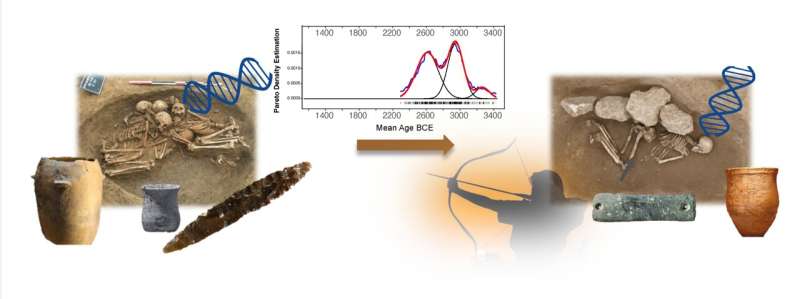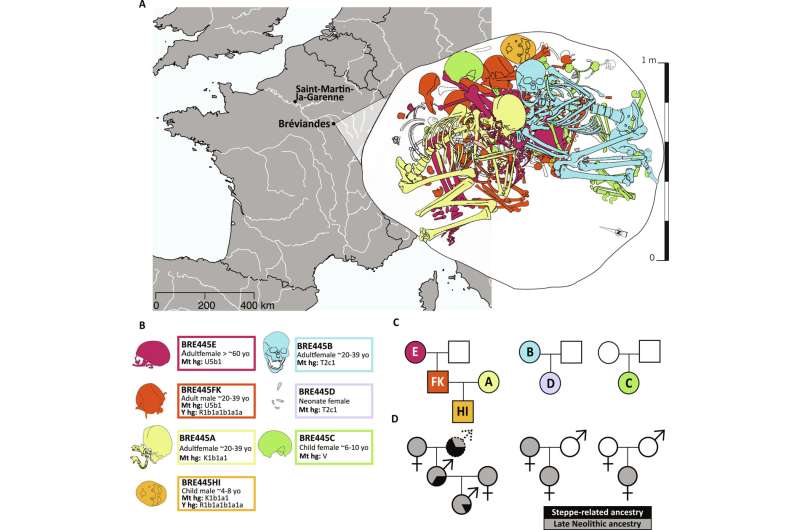June 20, 2024 report
This article has been reviewed according to Science X's editorial process and policies. Editors have highlighted the following attributes while ensuring the content's credibility:
fact-checked
peer-reviewed publication
trusted source
proofread
Gravesite in France offers evidence of steppe migrant integration with Late Neolithic Europeans

A team of geneticists and archaeologists affiliated with multiple institutions in France has uncovered skeletons in an ancient gravesite not far from Paris that show evidence of steppe migrant integration with Late Neolithic Europeans. The study is published in the journal Science Advances.
Prior research has shown that there was a slow migration of herding people from what is now Russia and Ukraine to Europe thousands of years ago. During the migrations, many of the migrants (who were mostly male) produced children with the local farmers they encountered.
In this new study, the research team reports evidence of such reproduction in remains found in an open grave in the Champagne region of France. Skeletons in the grave showed evidence of a native European woman who had produced a child with a steppe migrant.
The shallow grave contained the skeletons of seven people, all dated back to approximately 4,500 years ago. The skeletons were from three grown women, a grown man, two children and an infant. Hoping to learn more about their ancestry, the research team sequenced their genomes, hoping to find relationships.
They were surprised to find that, in addition to being related, some of the people in the grave had comingled with steppe migrants. They found that one of the adult women was the mother of the adult man. The mother had no steppe genes, but her son did, showing that she had carried at least one child with a male steppe migrant.

The researchers also found that one of the children was the grandson of that woman and son of her offspring—the child also carried genes from the same steppe migrant. Upon further analysis, the research team made an estimate of the steppe ancestry of the missing grandfather—he had approximately 70% steppe ancestry. None of the other people in the grave were related to any of their interred cohort.
The research team notes that their find was unique—an example of a steppe migrant having a child with a Late Neolithic European woman, representing the process of comingling in progress.
More information: Oğuzhan Parasayan et al, Late Neolithic collective burial reveals admixture dynamics during the third millennium BCE and the shaping of the European genome, Science Advances (2024). DOI: 10.1126/sciadv.adl2468
Journal information: Science Advances
© 2024 Science X Network





















